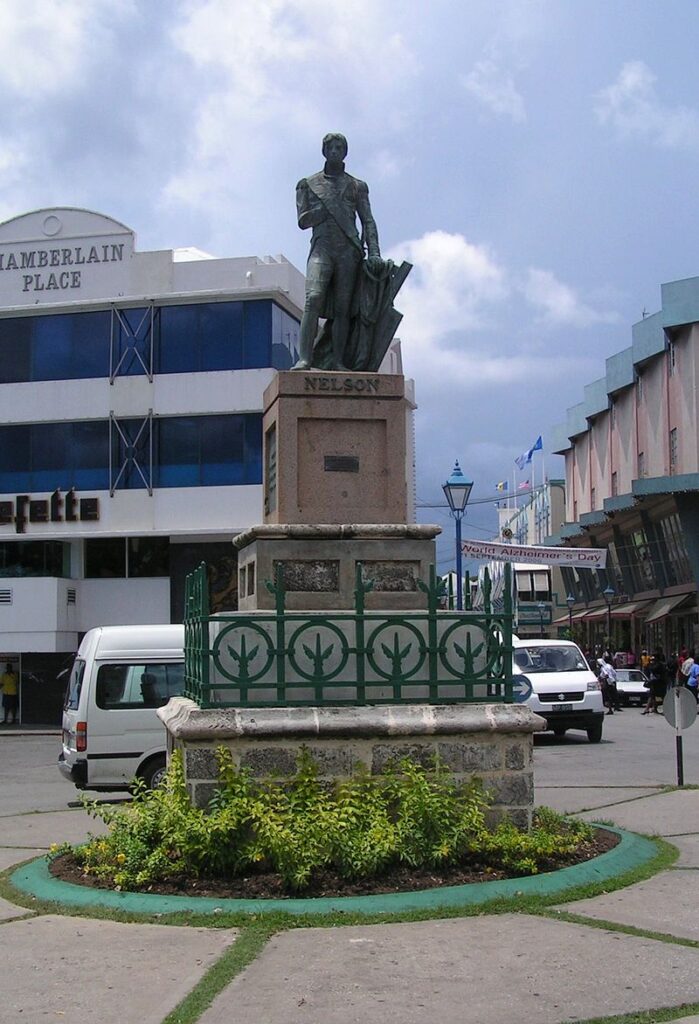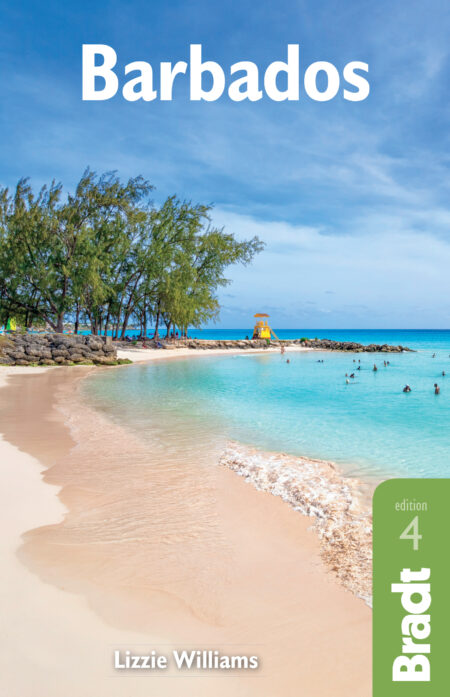While the coastline of Barbados is one of the most beautiful in the world, this gorgeous Caribbean nation has far more to offer than its beaches. The capital city of Bridgetown sits on Carlisle Bay on the southwest corner of the island and is the perfect place to experience a different side to Barbados.
For more information about this fascinating city, see our guide to Barbados.
Things to do in Bridgetown, Barbados
National Heroes Square
This small, triangular ‘square’, between Broad Street and the north side of the Careenage, is the hub of central Bridgetown. It used to be called Trafalgar Square and there is a statue there of Lord Nelson that predates its London equivalent by 30 years. Admiral Nelson visited Barbados with his fleet in 1805, a few months before his death, and the square was named the following year.
Over the years the name became the subject of some controversy as it was thought to link Barbados too closely with its colonial past. As a result, Nelson was turned through 180° so that he no longer looked down Broad Street, and in 1999 Trafalgar Square was renamed National Heroes Square after the 10 people who shaped the modern history of Barbados; they are also remembered on National Heroes Day, which was first celebrated on 28 April 1998, the centenary of the birth of Sir Grantley Adams.
Other features of the square worth visiting include the Cenotaph War Memorial, with its grey granite obelisk built in 1925 to commemorate Barbadians who died during the First World War, and the Dolphin Fountain, constructed in 1865 to commemorate the piping of water to Bridgetown in 1861.
Parliament Buildings
Across Broad Street to the north of the square are the neo-Gothic Parliament Buildings with their red roofs and green shutters. Founded in 1639, Barbados has the third-oldest parliament in the Commonwealth, after Britain and Bermuda. The present buildings, where both the lower house (House of Assembly) and the upper house (Senate) still meet weekly, were completed in 1873.
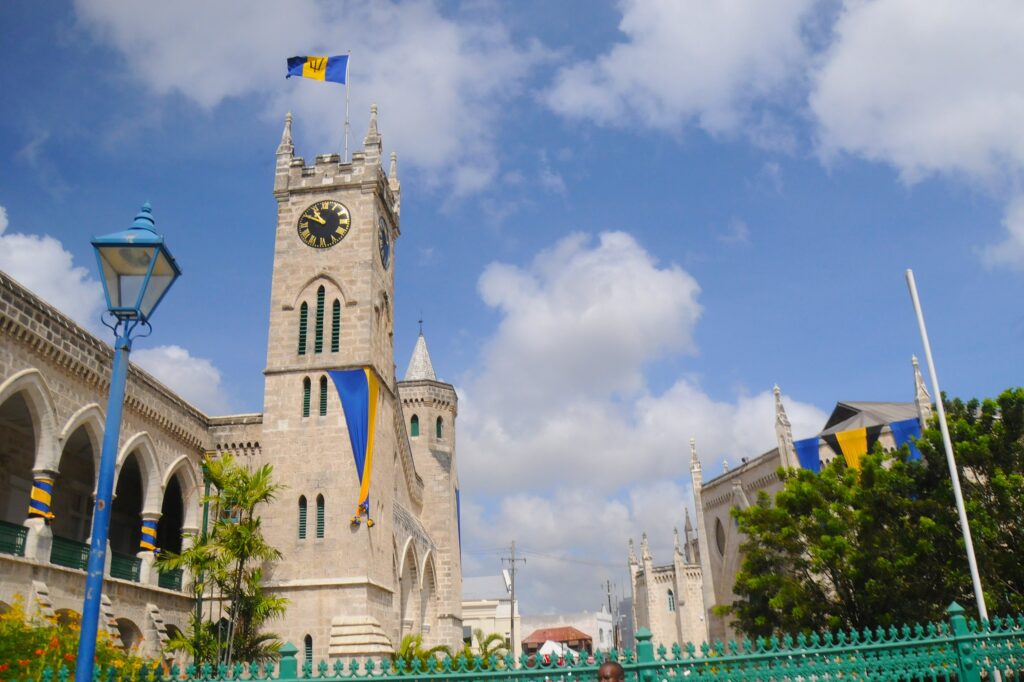
The clock tower on the west wing dates from 1886 and was originally located on the east wing; but within 10 years of its construction, it began to sink and crack and had to be demolished in 1884. The redesigned clock tower and reassembled clock were moved to the west wing in 1880.
The Garrison Historic Area
South of central Bridgetown is the Garrison area that guards the entrance to Carlisle Bay and the capital. During the 18th century the Caribbean was the scene of numerous military conflicts, primarily between Britain and France who fought for supremacy. In the face of a possible French invasion in 1785, a permanent garrison was built and Barbados became the headquarters of the Windward and Leeward command of the British forces in the region.
In 2011, Historic Bridgetown and its Garrison became a UNESCO World Heritage Site as “an outstanding example of British colonial architecture” and today a visit here offers a unique insight into the island’s complicated colonial history.
The focal point is the 30-acre Garrison Savannah (or just the ‘Savannah’), once a swamp before it was drained by the Royal Engineers in the early 1800s to become a parade ground for soldiers and the place where they trained and drilled. It was surrounded by a six-furlong racecourse in 1845, first used by regimental officers whose horses competed against those of wealthy plantation owners. Still a popular racecourse, it is now the home of the Barbados Turf Club.
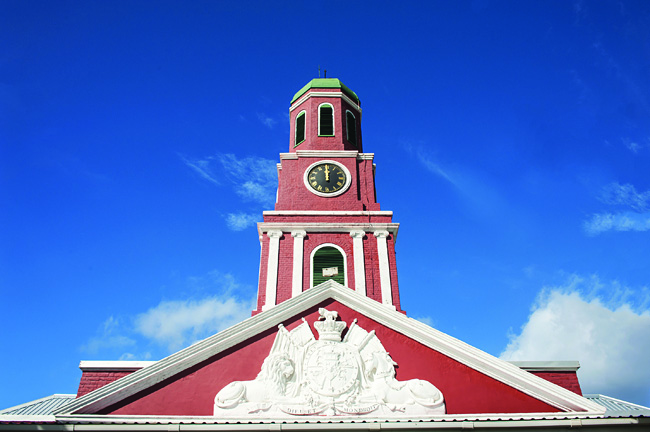
On Garrison Road, the Main Guard overlooks the racecourse from the western side. Built in 1804, it is one of the most outstanding buildings in the Garrison Historic Area. It is of elegant Georgian style and the main house, with its Roman arched portico and pediment, has a George III Coat of Arms designed especially for the building, a handsome clock tower, a fine wide veranda (or gallery in Caribbean terms) with cast-iron trimmings, and there’s a guardhouse at the rear. Today the property is home to several organizations, including the Barbados Legion and Barbados Poppy League.
Nidhe Israel Synagogue
This beautifully restored place of worship is an early 19th-century building on the site of a 17th-century one, one of the two earliest synagogues in the western hemisphere. In 2011 the synagogue and excavated mikveh were designated as UNESCO protected properties and stand as an important symbol of the island’s Jewish history.
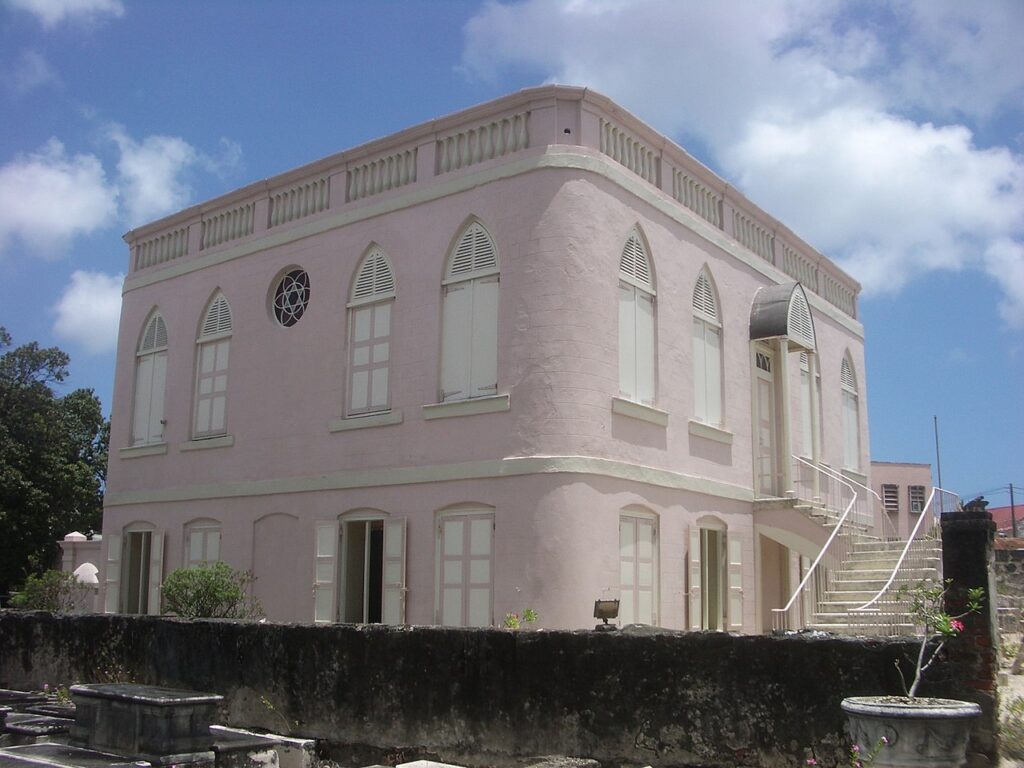
A small revival of Jewish residents on Barbados began with a few Polish Jews fleeing Europe in the late 1930s en route to Venezuela and in 2017 the community designated the Barbados Synagogue Historic District, which covers the whole block bounded by James Street, Coleridge Street, Magazine Lane and Synagogue Lane. It includes beautiful grounds, the Jewish cemetery, and other buildings such as Bridgetown’s first fire station (1858), which is now a café, and the former rabbi’s house next to the synagogue that is a museum exhibiting a timeline of Jewish settlement in Barbados.
Today the west wing houses public offices as well as the Museum of Parliament and National Heroes Gallery. This is a simple but well-staffed and interesting museum which brings snippets of Barbados’ history alive with murals, artefacts, quotes, videos and photographs. It’s also refreshingly air-conditioned, so makes a fine cooling break on a hot walk around the centre of Bridgetown.
Bridgetown Boardwalk
To the west of Chamberlain Bridge, along Wharf Street on the northern side of the Careenage, is the wooden Bridgetown Boardwalk. Featuring vintage-style street lamps and benches and a number of shops and cafés, it offers a good view of the yachts, charter fishing boats and catamarans docked in the Careenage. About halfway along, on the corner of Parry Street, the red-brick Old Spirit Bond Building dates back to the 18th century when it was a warehouse for rum and other spirits.
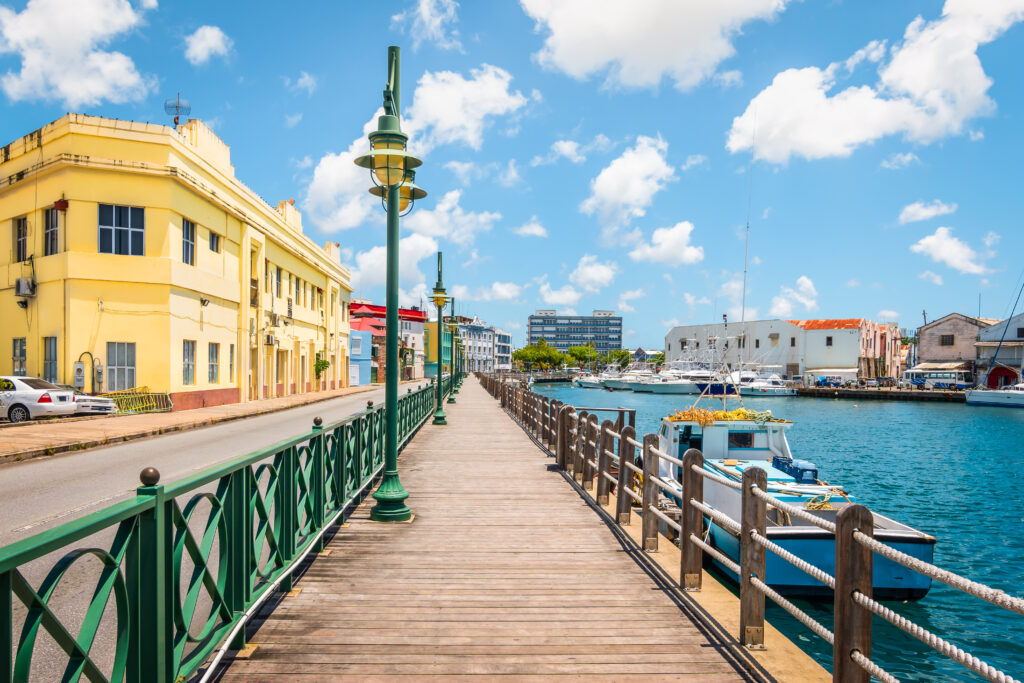
From here, barrels were loaded on to small boats in the Careenage and then transported to cargo ships docked offshore in Carlisle Bay. The building has been restored and is now home to small businesses. At the western end of the boardwalk is a small park which celebrates Barbados’ maritime heritage, complete with cannons (originally from James Fort) and plaques with interesting facts about Barbados pirates.
Shopping in Bridgetown
Broad Street is Bridgetown’s main road and business area and is lined with shops, small malls, banks, offices and fast food restaurants. It runs east to west from Fairchild Street to Cheapside Road, and colonial-style buildings dating back to the 1800s rub shoulders with more modern buildings. Many of the shops are devoted to cruise-ship passengers and sell souvenirs and duty-free jewellery, cameras, cosmetics, perfumes, alcoholic beverages and the like.
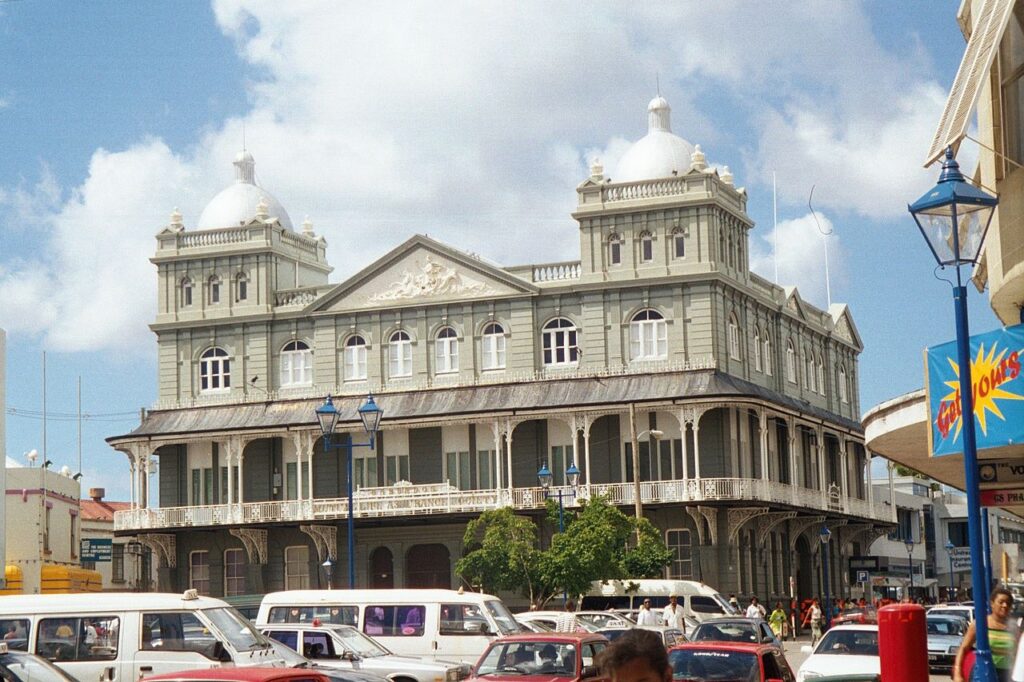
If mainstream shopping is not your thing, Bridgetown is also home to a number of local markets. Cheapside is an excellent and colourful fresh fruit and vegetable market selling a variety of unique Caribbean produce (make sure to sample one of the region’s famous breadfruits) and the Bridgetown Fish Market is where many of the islands’ restaurants buy their ‘catch of the day.’
Where to eat and drink in Bridgetown
Agapey Chocolate Factory
About 500m west of Chamberlain Bridge, the Agapey Chocolate Factory sells delicious homemade artisan dark chocolate (and ice cream) using local cane sugar and rum to flavour cocoa from Ecuador, Grenada and the Dominican Republic. One-hour ‘bean to bar’ factory tours are conducted with prior reservation.
Harbour Lights
This open-air venue on the beach at Carlisle Bay has two dancefloors and bars, a grill restaurant and is pumping with music, lively and crowded. Don’t miss the ‘Beach Extravaganza Dinner Show’ on Monday and Wednesday which includes a Bajan barbecue, drinks and a show featuring fire eaters, stilt walkers, limbo dancers and steel pan performers.
Balcony
Go early because this is popular with locals and the queue gets long for the buffet lunches. Choose a small or large plate, pile it with salads, macaroni pie and all the trimmings, then pay for your portion of meat or fish and wash it down with a Banks beer. Great place to eat local food at local prices and a good spot for people-watching on Broad Street below.
More information
For more information, check out Lizzie Williams’s guide to Barbados:
